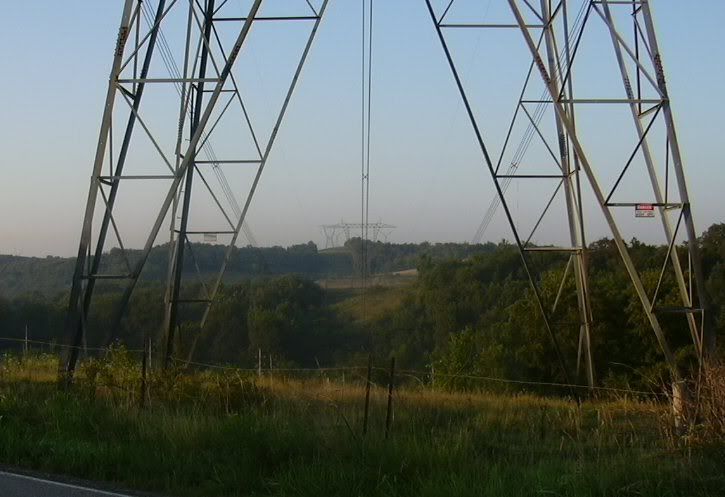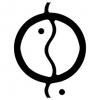General Chat / The Offical Photography Thread
-
 19-March 06
19-March 06
-

 natelox
Offline
The following photographs are hardly remarkable, however I have posted them as they are my first photo's with a tripod. Well, not exactly a tripod but Joby's Gorillapod. I purchased it because I want to achieve effects such as the 'red stream of tail lights' and 'flowing water.' It's more difficult than I thought! Oh well, my first experiments:
natelox
Offline
The following photographs are hardly remarkable, however I have posted them as they are my first photo's with a tripod. Well, not exactly a tripod but Joby's Gorillapod. I purchased it because I want to achieve effects such as the 'red stream of tail lights' and 'flowing water.' It's more difficult than I thought! Oh well, my first experiments:
This was taken at approximately 9:55 PM. Yes, PM! It's like night vision when using a long exposure.
View from the mountain. It didn't turn out too great, but each street light is identifiable which is a step in the right direction.
An attempt with a car. It worked well. The lighting in the area is poor (curse those high-pressure sodium lights).
All in all a good learning experience. The weather was quite poor too, lots of rain, wind and fog, and some thunder and lighting. All of the pictures have significant noise. I read a bit about it on the internet and found that my ISO was way too high, esspically for my camera. I was using ISO400, when reviews of my camera say that up to ISO200 has minimal if no noise. More testing to come. -

 natelox
Offline
Another one! This time with the lowest ISO possible. Kind of looks like "Back to the Future."
natelox
Offline
Another one! This time with the lowest ISO possible. Kind of looks like "Back to the Future."
-

 Magnus
Offline
Hey nate,
Magnus
Offline
Hey nate,
what camera are you using for these shots and are you happy with the performance of the Gorilla Tripod? I like the concept of that one a lot, but fear that it won't hold a heavy DSLR and I am not sure if I really have use for it as I am happy with my 055 ProB Manfrotto.
The low ISO on the last one helps a lot, but it seems your camera isn't capable of displaying the high dynamic range of the lights. A problem all digital cams have. You might want to read some articles about HDR pictures, a method to increase the dynamic range of your camera by taking various shots with different exposure times. qtpfsgui is a nifty tool to start of with. Just be careful with the tonemapping as it is trail&error and the loading times for high resolution pictures are ridiculous.
Architecture at night is a nice subject aswell. You might want to try that one day. I am already looking forward to a possible Berlin trip in about a month for that.
Looking forward to see more of your pictures,
Magnus -
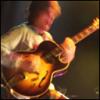
 Jellybones
Offline
Jellybones
Offline
Apart from the somewhat washed out sky, I love the colors on this one. Was this digital or film, Steve?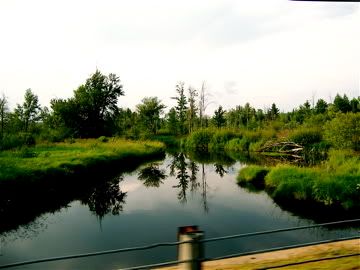
-

 natelox
Offline
I'm using a Sony DSC-H1. It's not a true DSLR, but it mimics the associated functions. The Gorilla-pod works well, however if there is any detractor it is the initial vibration. To counteract this you need to set the timer. My camera has a ten second timer which you can't change (make shorter). It makes it difficult trying to capture a car on a street without much traffic. The reason I purchased it was because I wanted to experiment with slower shutter speeds, but without a huge tripod. The Gorilla-pod fits in my pocket and weighs next to nothing. They come in three sizes and I have the medium sized variety. On Joby's website they have a 'select which is right for me' based on your camera. Here are the three sizes:
natelox
Offline
I'm using a Sony DSC-H1. It's not a true DSLR, but it mimics the associated functions. The Gorilla-pod works well, however if there is any detractor it is the initial vibration. To counteract this you need to set the timer. My camera has a ten second timer which you can't change (make shorter). It makes it difficult trying to capture a car on a street without much traffic. The reason I purchased it was because I wanted to experiment with slower shutter speeds, but without a huge tripod. The Gorilla-pod fits in my pocket and weighs next to nothing. They come in three sizes and I have the medium sized variety. On Joby's website they have a 'select which is right for me' based on your camera. Here are the three sizes:
Mine is on the right.
HDR photography is neat, but I find that it comes too close to that line between real and unreal. It almost looks fake and tends to exaggerate reality. -

 Magnus
Offline
Magnus
Offline
HDR photography is neat, but I find that it comes too close to that line between real and unreal. It almost looks fake and tends to exaggerate reality.
That is mainly the tonemapping people are using. HDR technology has been used years ago already, when people took two pictures and various masks to make one of it. HDR can look real und unreal, if you want to make it look real go for it. There are lots of possibilities, but saying it looks fake is a hasty judgement.
Thanks for the link to the Gorilla Tripod site. Already checked it a long time ago and of course they are saying it can hold a DSLR. Problem is the mirror going up, which will cause vibrations. I also wonder if it can really hold a DSLR with a heavy lens on it. Will probably have to wait for some comments on the Nikon Boards. Thanks for the information.
Magnus -

 natelox
Offline
Yeah, I don't know too much about HDR, other than the different exposures and the fact that it exists. That Wikipedia article had some normal looking photographs. Some people really over-do it with super high contrast. Looking at the picture I took of the car and street, is that even possible to do with HDR? It would appear that a stationary subject is required. Or would a shorter exposure without the car take care of the street light but maintain the blur of the tail lights?
natelox
Offline
Yeah, I don't know too much about HDR, other than the different exposures and the fact that it exists. That Wikipedia article had some normal looking photographs. Some people really over-do it with super high contrast. Looking at the picture I took of the car and street, is that even possible to do with HDR? It would appear that a stationary subject is required. Or would a shorter exposure without the car take care of the street light but maintain the blur of the tail lights?
Thanks for the helpful suggestions by the way. -

 Jellybones
Offline
That HDR photo wiki entry was way over my head, but I'll be damned if some of those pictures weren't really cool.
Jellybones
Offline
That HDR photo wiki entry was way over my head, but I'll be damned if some of those pictures weren't really cool.
I really have no idea when it comes to digital imaging. My Photoshop skillset is rudimentary at best and I use my digital camera to take pictures with a 35mm mindset. I ought to work on that in the future. But the all-35mm film photo class I'm taking next semester won't help that any. -

 Steve
Offline
Digital, Jelly. I agree with you about the sky, that was what bothered me most about most of the pictures I took. For some reason unknown to me, the sky was not particularly blue that day. That was up in the Lakes Region in NH, by the way. Beautiful area.
Steve
Offline
Digital, Jelly. I agree with you about the sky, that was what bothered me most about most of the pictures I took. For some reason unknown to me, the sky was not particularly blue that day. That was up in the Lakes Region in NH, by the way. Beautiful area. -

 natelox
Offline
Here are two more I took last night. This is it for a while; I'm off to India and Nepal for five weeks.
natelox
Offline
Here are two more I took last night. This is it for a while; I'm off to India and Nepal for five weeks.

-

 Emergo
Offline
Emergo
Offline
Who on earth told you Venice isn't beautiful?
No idea....and indeed Venice is beautiful still, in many ways ....but also....if you are there longer than 3 days and have passed the oooh´s and aaah´s of the tourist sights...then yes, it is one of the most spoiled, pestered, dirty, exploited and `disabled´ tourist-towns of Italy...pity, pity...'
Many pics I love in this thread, but I don´t follow it regularly enough to comment on a lot of them.
One however very much caught my attention: Steve, that 9th one -last but one- Wow!! What an atmosphere there with that cloudy-sky, the lonely walker and the nearly black-an-white.
Really good catch!!
Emergo -
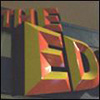
 Coaster Ed
Offline
Well, with HDR you're basically talking about more accurately representing contrast photographically so in a purely technical sense, the images you're creating are more realistic. Traditional film formats limit contrast artificially because the film is only equipped to handle a certain contrast range -- anything above that range will read as white, anything below will read as black. When digital photography was new, this contrast range was even more limited because the sensors in digital cameras could handle an even smaller contrast range than film.
Coaster Ed
Offline
Well, with HDR you're basically talking about more accurately representing contrast photographically so in a purely technical sense, the images you're creating are more realistic. Traditional film formats limit contrast artificially because the film is only equipped to handle a certain contrast range -- anything above that range will read as white, anything below will read as black. When digital photography was new, this contrast range was even more limited because the sensors in digital cameras could handle an even smaller contrast range than film.
This was a huge issue in cinematography a few years ago because cinematographers were used to working within a certain contrast range using film and suddenly they had to re-learn how to light scenes with less contrast. Another issue with digital cameras was the increased resolution. Even the sharpest filmstocks will produce images with a certain trace amount of grain which acts as a kind of built in smoothness filter. Shoot the same image with a high resolution digital camera and you can see wrinkles and makeup streaks which weren't visible on film. Some companies even invented special blurring algorithms intended to mimic the look of film. So basically this debate broke down into two different schools of thought. (1) That the digital format needs to be adjusted to produce images more comparable to film stocks. Our eyes have become so adapted to the artistic quality of photochemical photography that we associate that image quality with movies. Video is associated with television and cheap production. Even if the images digital produces are sharper, they lack the artistic quality of film and need to be muddied up a bit. (2) That film itself has always had a number of siginificant flaws (limited contrast, film grain especially visible in low-light filmstocks, requires a certain mimimum level of light to distinguish anything) and digital technology has the potential to move beyond those flaws. We should approach digital photography as an entirely different medium and learn it's strength and weaknesses instead of trying to pretend that it's film.
Since then I think the second school of thought has been steadily gaining favor. I was firmly in the film camp a few years ago, but lately certain technological advancements are making digital look more and more appealing. Special low-light cameras can produce visible images using only available light (see Michael Mann's latest movies Collateral and Miami Vice for examples of low-light digital images produced with the Viper Filmstream camera). Panavision's Genesis camera mimics the contrast range of film remarkably well producing images that are almost indistinguishable from 35mm (Deja Vu for instance). Zodiac is another good example. I would have sworn that movie was shot on film, but it was actually shot on the Viper camera. It's getting harder and harder to tell the difference now that the sensitivity of digital cameras has improved so much.
Anyway, the reason I bring all of that up is because HDR is beginning to take photography well beyond what was possible before. Photography is all about reproducing a map of the light in front of you. It used to be you had to control the light levels or control the exposure to produce an accurate image because film reads light differently than our eyes do. The best photographers had the ability to look at a scene and understand how the camera will see it. They learned this the only way you can learn it, through years of experience. But if you can now record a contrast range roughly equivalent to what our eye can record, it changes the intent of the photograph entirely. Instead of selecting which part of the scene to focus on by setting your exposure, you can actually record light the way we see it. Imagine photographing a window and being able to record the information in the room the way you see it without completely losing detail outside. Or shooting a portrait of someone in the shade without completely losing the sky or completely underexposing their face. That's a photographers dream. You could do it before with seperate exposures, but that only works for still photography and you have to be locked down on a tripod. If the sensor can actually handle the whole cotnrast range than you can get those results with motion pictures too.
But just like photography didn't make painters obsolete, HDR won't make photographers obsolete either. It just changes the role a little bit. The best photographers aren't just recording a scene, they're making an artistic statement about what they see by controlling how it is photographed. Where to put the lens, where to set the focus, which lens to use, how to set the exposure. That doesn't change. So whether you use the technology to create something more realistic or use it to bend reality even further is just an artistic choice. -

 Midnight Aurora
Offline
Midnight Aurora
Offline
Well, with HDR you're basically talking about more accurately representing contrast photographically so in a purely technical sense, the images you're creating are more realistic. Traditional film formats limit contrast artificially because the film is only equipped to handle a certain contrast range -- anything above that range will read as white, anything below will read as black. When digital photography was new, this contrast range was even more limited because the sensors in digital cameras could handle an even smaller contrast range than film.
This was a huge issue in cinematography a few years ago because cinematographers were used to working within a certain contrast range using film and suddenly they had to re-learn how to light scenes with less contrast. Another issue with digital cameras was the increased resolution. Even the sharpest filmstocks will produce images with a certain trace amount of grain which acts as a kind of built in smoothness filter. Shoot the same image with a high resolution digital camera and you can see wrinkles and makeup streaks which weren't visible on film. Some companies even invented special blurring algorithms intended to mimic the look of film. So basically this debate broke down into two different schools of thought. (1) That the digital format needs to be adjusted to produce images more comparable to film stocks. Our eyes have become so adapted to the artistic quality of photochemical photography that we associate that image quality with movies. Video is associated with television and cheap production. Even if the images digital produces are sharper, they lack the artistic quality of film and need to be muddied up a bit. (2) That film itself has always had a number of siginificant flaws (limited contrast, film grain especially visible in low-light filmstocks, requires a certain mimimum level of light to distinguish anything) and digital technology has the potential to move beyond those flaws. We should approach digital photography as an entirely different medium and learn it's strength and weaknesses instead of trying to pretend that it's film.
Since then I think the second school of thought has been steadily gaining favor. I was firmly in the film camp a few years ago, but lately certain technological advancements are making digital look more and more appealing. Special low-light cameras can produce visible images using only available light (see Michael Mann's latest movies Collateral and Miami Vice for examples of low-light digital images produced with the Viper Filmstream camera). Panavision's Genesis camera mimics the contrast range of film remarkably well producing images that are almost indistinguishable from 35mm (Deja Vu for instance). Zodiac is another good example. I would have sworn that movie was shot on film, but it was actually shot on the Viper camera. It's getting harder and harder to tell the difference now that the sensitivity of digital cameras has improved so much.
Anyway, the reason I bring all of that up is because HDR is beginning to take photography well beyond what was possible before. Photography is all about reproducing a map of the light in front of you. It used to be you had to control the light levels or control the exposure to produce an accurate image because film reads light differently than our eyes do. The best photographers had the ability to look at a scene and understand how the camera will see it. They learned this the only way you can learn it, through years of experience. But if you can now record a contrast range roughly equivalent to what our eye can record, it changes the intent of the photograph entirely. Instead of selecting which part of the scene to focus on by setting your exposure, you can actually record light the way we see it. Imagine photographing a window and being able to record the information in the room the way you see it without completely losing detail outside. Or shooting a portrait of someone in the shade without completely losing the sky or completely underexposing their face. That's a photographers dream. You could do it before with seperate exposures, but that only works for still photography and you have to be locked down on a tripod. If the sensor can actually handle the whole cotnrast range than you can get those results with motion pictures too.
But just like photography didn't make painters obsolete, HDR won't make photographers obsolete either. It just changes the role a little bit. The best photographers aren't just recording a scene, they're making an artistic statement about what they see by controlling how it is photographed. Where to put the lens, where to set the focus, which lens to use, how to set the exposure. That doesn't change. So whether you use the technology to create something more realistic or use it to bend reality even further is just an artistic choice.
k. -
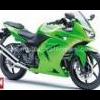
 woofenskid
Offline
It was begging me to take pictures of it.
woofenskid
Offline
It was begging me to take pictures of it.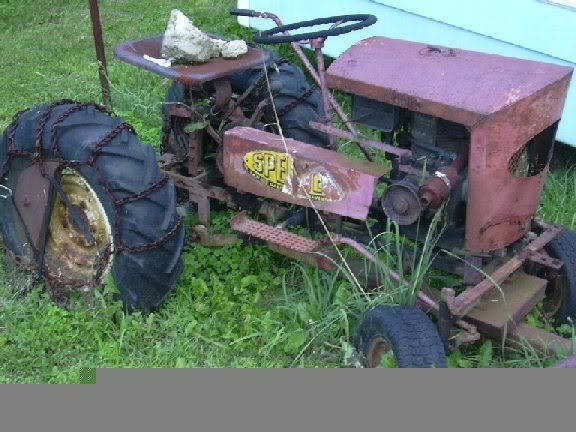
the resoloution is crappy, becuase i had to resize it and the compression and all that shit. -

 Jampri
Offline
Just had to throw this pic up here, taken today on my way home from a 30 mile backpacking trip.
Jampri
Offline
Just had to throw this pic up here, taken today on my way home from a 30 mile backpacking trip.
I've got a whole bunch of other awesome ones I'll post at a later time, after I unpack...Edited by Jampri, 28 July 2007 - 09:38 PM.
-

 Magnus
Offline
Drievliet, Toverland and Phantasialand.
Magnus
Offline
Drievliet, Toverland and Phantasialand.
Nice tour.
Somehow like the Formule X picture. Pretty dynamic and the perspective is a great. I always like coaster pictures like that. If the train headed the other direction it would be close to perfect imo. Too bad coaster designers hardly think the photographers way.
 Tags
Tags
- No Tags


